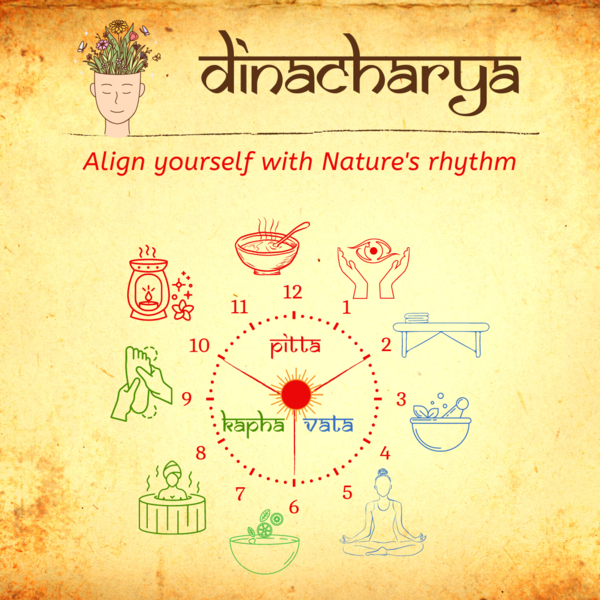If You Can’t Change Their Ahara and Vihara, You’re Not Healing – You’re Managing.” Ayurveda was never meant to be symptomatic. Real healing demands lifestyle correction, not lifetime medication.
- Dr Rakesh VG
- Jul 14
- 3 min read
Updated: Jul 15
By Dr Rakesh Ayureshmi, Ayureshmi Ayurveda Wellness Centre, Kollam, Kerala, India
"The Dangerous Lie of “Maintenance Mode”
What if most “Ayurvedic” treatment today is just modern medicine wearing a herbal mask? Millions take churnams, kashayams, and capsules for years—without ever addressing the roots of their disease. True Ayurveda doesn’t believe in chronic disease. It believes in misaligned living. If your patients’ food (ahara) and daily habits (vihara) aren’t corrected, you’re not healing them. You’re sedating their symptoms—naturally.
In a world obsessed with convenience, we must remember: medicine without lifestyle change is just management in disguise.
Symptom Control ≠ Healing
Most patients today—even in Ayurvedic clinics—expect the same thing they seek from allopathy: “Give me something to fix this.” They want medicine without sacrifice. Relief without change. This mindset leads to chronic dependence, even on Ayurvedic drugs.
"Nityam bheshajasevanam roga-samvardhanam iti" – Constant medicine intake nurtures disease rather than curing it.
(Classical interpretation from the Sushruta Samhita)
Many Vaidyas fall into this trap: prescribing long-term formulations without addressing the person’s dinacharya, raatricharya, or diet.
Without addressing the cause (nidana), there is no true cure (chikitsa).
Ayurveda Is a Lifestyle Science, Not a Pill System
नित्यं हिताहारविहारसेवी
समीक्ष्यकारी विषयेष्वसक्तः ।
दाता समः सत्यपरः क्षमावान्
अप्तोपसेवी च भवत्यरोगः
Ayurveda is not “plant-based pharmacology.” It is a complete, human-based science.
Ahara (Diet): Food is the first medicine. It affects agni, dosha, and even manas (mind). As Charaka says, “Annaṁ Brahma” — Food is divine.
Vihara (Lifestyle): Sleep, sexual behavior, work-rest rhythm, screen time (yes, even now), emotional hygiene—all influence health.
Aushadha (Medicine): This is only the third pillar. Without the foundation of ahara and vihara, medicines become crutches.
A powerful analogy:
"Prescribing medicine without changing lifestyle is like mopping the floor while the tap is still running."
"To remove the rust from an iron bar inside the water , first you have to remove the iron bar from the water itself" -- That is NIDANAPARIVARJANAM.
Evidence: Modern Research Proves What Ayurveda Always Knew
1. Gut-Brain Axis & Chrononutrition:
Studies in circadian biology (e.g., Panda et al., Salk Institute, 2020) show how meal timing, light exposure, and sleep affect hormone regulation, immunity, and mood—echoing the Ayurvedic concept of dinacharya and ahara vidhi.
Improper eating time disrupts agni, leading to ama (toxins) — the root of most diseases.
2. Lifestyle Diseases Are Lifestyle-Caused:
According to the WHO (2023), 74% of global deaths stem from non-communicable diseases like diabetes, heart disease, and cancer—all preventable via diet, exercise, and stress control. Ayurveda offered this prevention centuries ago.
3. Dosha-Specific Lifestyle Correction Works:
A study published in the Journal of Alternative and Complementary Medicine (2018) showed that Vata-pacifying lifestyle changes (oil massage, grounding foods, stable routines) improved anxiety scores better than medications alone.
4. Epigenetics & Rituals:
Harvard’s research into epigenetics (Dr. Rudolph Tanzi et al.) shows that behavior, meditation, and even belief can alter gene expression—validating Ayurveda’s insistence on manasika dosha and sattvic lifestyle for healing.
When Vaidyas Become Dispensers, Not Teachers
The ancient role of the Vaidya was not a pharmacist—but a lifestyle guide, spiritual mentor, and body-mind mechanic.
Today, many Ayurveda centers have turned into herbal pharmacies—losing their soul.
The result? Patients stay stuck in suffering loops, becoming dependent on churnas instead of cigarettes.
A patient with IBS doesn’t need just bilwadi
They need:
To avoid incompatible foods (viruddha ahara)
To follow regular eating times
To reduce stress and screen time
To correct spine and colon nerve flow (via marma and chiropractic care)
To cultivate a sattvic, mindful approach to life
Real Healing Is Uncomfortable – But Liberating
Helping someone heal means asking them to change. That’s hard. It’s slower. It’s less “scalable.” But it’s truthful medicine.
“Nidanam parivarjayet” – First step in healing: Remove the cause.
(Ashtanga Hridaya Sutrasthana)
Yes, they may complain. Yes, some will drop out.
But those who stay will transform.
We are not here to keep patients coming back forever. We are here to set them free.
Conclusion: The Brave Return to True Ayurveda
If you're not asking your patients about:
Their breakfast timing
Their bowel habits
Their screen hours
Their sleep quality
Their emotional state
Their connection with nature
...then you’re not practicing Ayurveda. You're managing symptoms with herbal band-aids.
Let’s revive true Ayurveda—where ahara and vihara are medicine, not afterthoughts.
Be the Vaidya who sets people on the path to svastha—a self-sustained, independent state of health.
“Herbal meds without lifestyle change? That’s not healing. That’s herbal symptom suppression.
Ayurveda is about freedom, not lifetime dependence.
Let’s bring back the roots of true, lifestyle-based healing.







Comments